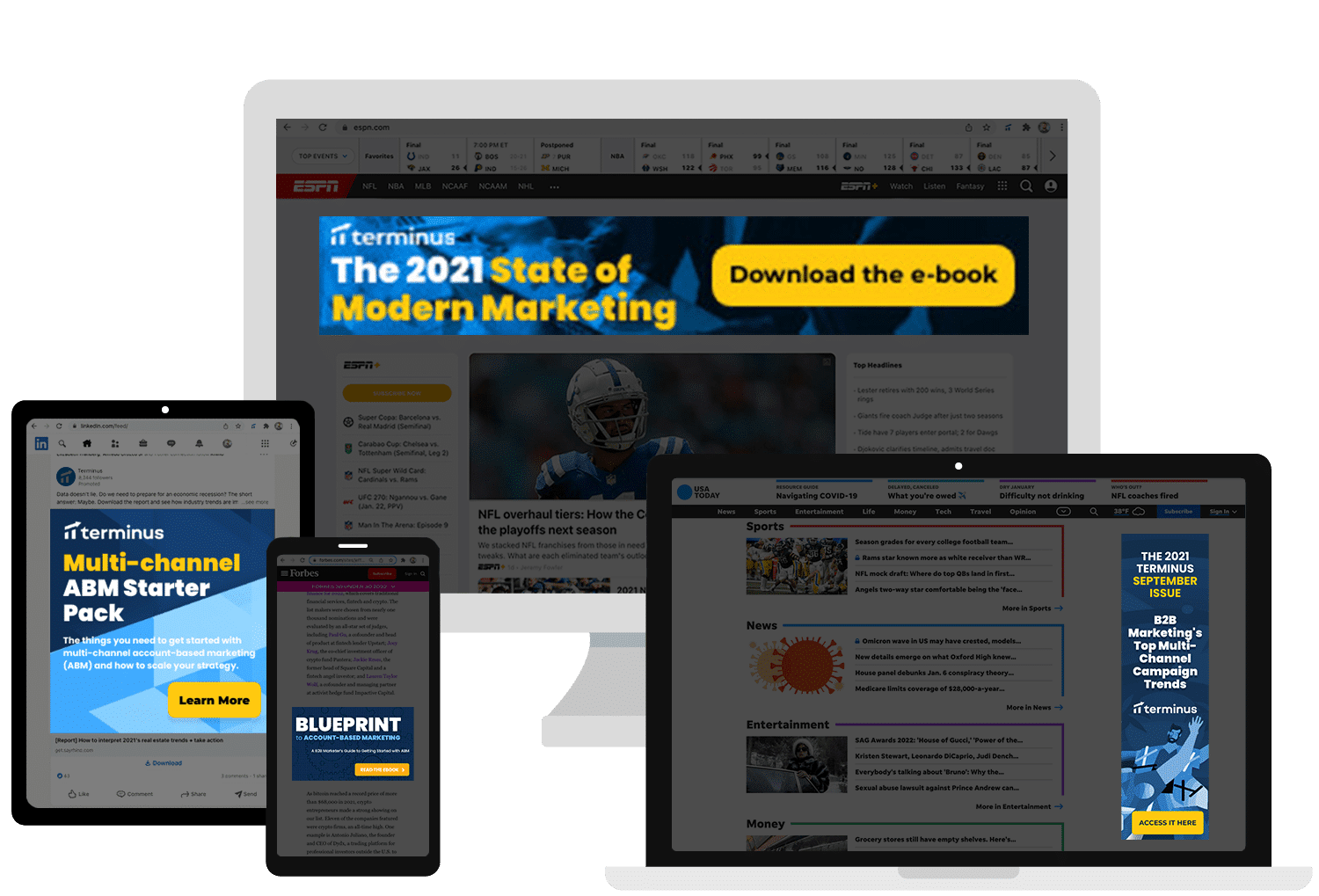100 Banner Ads Examples from Terminus Customers

Create targeted display advertising experiences for your audience

Understanding Targeted Display Advertising for B2B
Read the ebook
New ROI Study: The Total Economic Impact™ of the Terminus ABM Platform
Read more